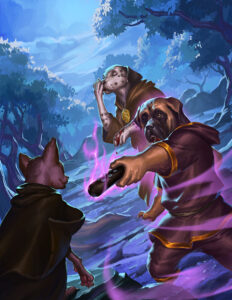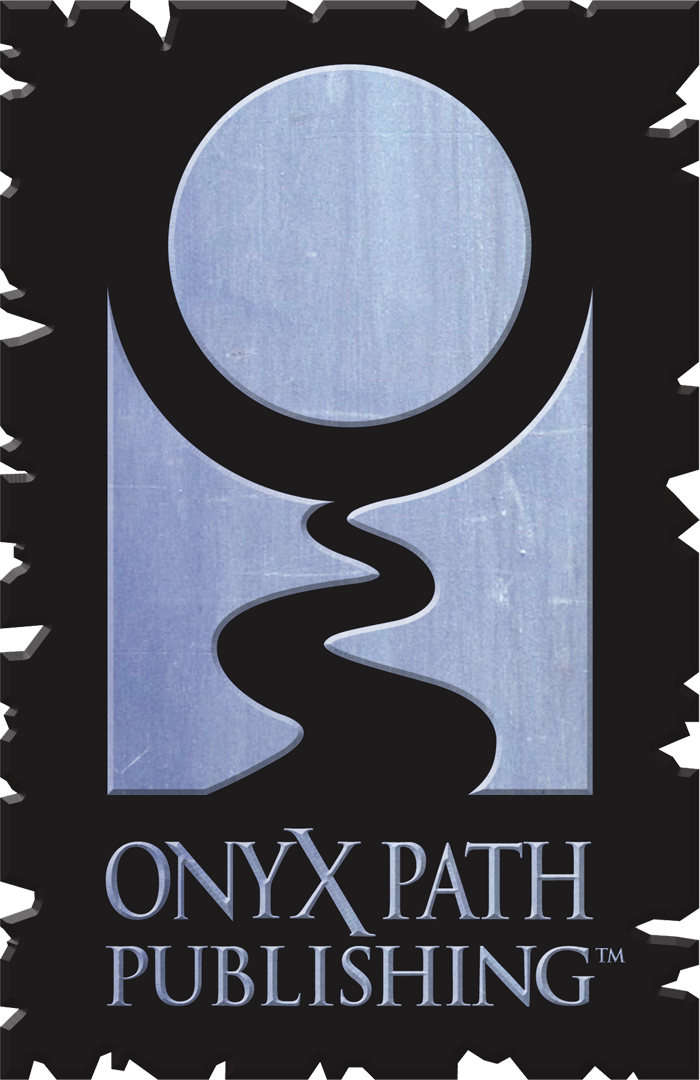When making a new edition of a tabletop role-playing game, there’s always a balance of keeping things familiar while providing enhanced value over the previous edition’s material. One of the areas we really worked to clarify and (pardon the pun) uplift was the magic section. Here’s a sample of what the new magic rules look like.

Magnitude
You may have noticed that each spellcaster has two types of spells when they’re starting off: Basic spells and magnitude 1 spells. Basic spells are simple and well-practiced enough that spellcasters have no trouble using them as much as they like. Much like how a guardian can swing a sword all day, there are no limits to how often a spellcaster can use basic spells.
Spells that aren’t listed as basic have magnitude, which is a measure of how powerful the spells are. This reflects how difficult they are to learn and cast, as well as how much energy casting them takes out of spellcasters. This energy is measured in spell points. Each spell costs its magnitude in spell points. Thus, a magnitude 1 spell costs 1 spell point, a magnitude 2 costs 2, and so on.
Level 1 spellcasters start with spell points equal to 2 + their Vitality modifier (which means a spellcaster with ?1 Vitality will only get 1 spell point). They also gain 2 + Vitality spell points each time they gain a level.
Empowering Spells
In addition to spending spell points to meet the cost of a spell’s magnitude, spellcasters can also spend additional spell points to increase the magnitude of certain spells. By spending the number of spell points listed before the additional effect, the spellcaster can cast a more powerful or alternate version of a spell. Although most spell improvements simply increase their spell’s numerical effects, some completely change how the spell operates, such as Control Light’s 2-spell-point effect, which creates darkness instead of light.
Example: Nasus is trying to find an invisible imp and casts Mystic Hound, a magnitude 1 spell. He’s worried the imp is going to get away and spends 3 spell points. Those 2 additional points allow the hound to suppress magnitude 3 illusions within a 25-foot radius. The imp’s in trouble now!
Empowering a spell changes the magnitude of the spell. You must be able to cast spells of that magnitude in order to improve them.
There are two kinds of additional spell costs:
- X spell points costs that number total of spell points, replacing the original spell’s cost. For example, “2 spell points” means 2 spell points are required, making it a magnitude 2 spell.
- +X spell points increases the cost of the spell by that number of points per each time you wish to empower it. So “+1 spell point” increases the cost and magnitude of the spell by 1.
You can combine such empowered effects; a 2-spell-point effect combined with a +1 spell point effect costs 3 spell points and counts as a magnitude 3 spell. However, only +X empowerments can be taken more than once if the spell indicates.
Learning New Spells
Each time a spellcaster gains a level, they can choose to improve their spellcasting trick, allowing them to either learn four new spells of any magnitude they can cast or increase the highest magnitude of spells they can learn by one. Regardless of which choice they make, they can also learn two new spells at the highest magnitude they can cast (or less). If they choose to increase the highest magnitude of spells they can learn, one or both of these two new spells can be of the new magnitude.
Spells
Each spell contains several elements that describe how they’re used and what they do.
Parts of a Spell
Spells and their descriptions have six basic components which every spell has, and two optional ones that not every spell has.
Calling: Each spell is practiced solely by either artisans or shepherds.
Magnitude: The power of a spell, with magnitude 1 spells being the weakest and magnitude 5 spells being much more powerful. The magnitude is also the number of spell points it costs to cast the spell.
Casting Time: How long it takes to cast the spell. If the spellcaster is interrupted during this time, they may lose control of their spell.
Range: How far away from the spellcaster the spell’s target can be. Some ranges say “self,” indicating the spell can only affect the spellcaster. Others say “touch,” indicating the spellcaster must successfully touch the target, using an attack roll to touch unwilling targets.
Duration: How long the spell lasts.
Effect: What the spell does.
Test (Optional): Many spells have effects that provide their target with a test to avoid some or all of the effect. This entry explains how the effect differs if the test is successful. If a spell does not specify that it has a test, it does not. If a spell has multiple effects that have tests, the effects and tests are listed separately.
Improved (Optional): Several spells have more powerful versions requiring additional spell points. The number indicates the total spell point cost of the spell or how many additional spell points are needed.
Concentration
Some spells can be maintained up to a set duration, so long as the spellcaster concentrates. Concentration requires a supplemental action and is automatically successful. Because spellcasters may only take one supplemental action per turn, they can only concentrate on one spell at a time (unless they forgo their normal action, changing it into a supplemental action). Spellcasters can continue to concentrate on a spell even if they’re wounded, but not if they are unable to use supplemental actions, such as being Unconscious.
Shapes
Some spells describe the kind of shape their effects create. Unless the spell description says otherwise, the shape affects everything touched by even a piece of it.
- Line: The area begins at one point and continues in the selected direction. Unless the description says otherwise, the line is five feet wide and tall.
- Cone: The area begins at a point and continues in a 90° cone.
- Cube: The area extends up, down, left, right, forward, and backward in specific dimensions determined by the spell.
- Cylinder: The area begins at the center and extends horizontally in all directions up to its radius, like a circle, and vertically up to its height.
- Sphere: The area begins at a central point and extends in all directions to the end length of the radius.
- Square: The area begins at a point on a flat surface, such as the ground or a wall, and extends in a square along that surface.
Generally, spells do not continue around corners or other obstructions. However, some spells state they fill their area. If they do, their areas spread around corners, and cover does not protect foes within the area.
Example: Sam casts Elemental Cone at a group of zombies. Unfortunately, there’s a pillar between Sam and some of the zombies. All zombies behind the pillar are spared from the spell. On the beagle’s next turn, he casts Oppressive Weight, which fills its area, crushing the zombies.
Spellcasting Modifiers & Test Difficulty
Each spellcaster has a spellcasting modifier based on the attribute referenced in the trick that grants a character spellcasting — Intellect for artisans’ Focus Magic (p. XX) and Cunning for shepherds’ Prayers to Man (p. XX).
Another common feature among spells is the need for a spell’s target to roll a test. The difficulty for this test is 8 + the spellcaster’s spellcasting modifier + the spellcaster’s experience bonus.
